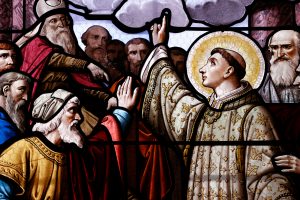
+Feast of St. Stephen, Martyr+
Introduction
One must wonder if those who try to search out what is happening to us in these days ever think to credit and be grateful for the great Catholic minds who went before us and so eruditely plotted out what might happen to us and what we could expect in these times. But it seems that very few people really examine these things very closely because so many of the commentaries are hard to understand and also seem to mischaracterize the things that we’ve experienced as far as the destruction of the Church goes. Some commentators get most of it right, but spin-off at some point on one issue that falsely colors everything else they write. Others are wrong on most points but then are surprisingly clear on others. So most people read a little bit and tend to give up or maybe decide that, well, after all, it’s not that important. But it IS important, as we learned in our last blog, because if we don’t understand who we are and where we are in time, we’re not going to be doing what Christ expected us to do as overcomers and witnesses in this time prior to Christ’s Second Coming.
The prophet Daniel speaks of these times in the following verses in chapter 12 of the Old Testament:
“1 But at that time shall Michael rise up, the great prince, who standeth for the children of thy people: and a time shall come, such as never was from the time that nations began, even until that time. And at that time shall thy people be saved, every one that shall be found written in the book.
2 And many of those that sleep in the dust of the earth, shall awake: some unto life everlasting, and others unto reproach, to see it always.
3 But they that are learned, shall shine as the brightness of the firmament: and they that instruct many to justice, as stars for all eternity.
4 But thou, O Daniel, shut up the words, and seal the book, even to the time appointed: many shall pass over, and knowledge shall be manifold.
5 And I, Daniel, looked, and behold as it were two others stood: one on this side upon the bank of the river, and another on that side, on the other bank of the river.
6 And I said to the man that was clothed in linen, that stood upon the waters of the river: How long shall it be to the end of these wonders?
7 And I heard the man that was clothed in linen, that stood upon the waters of the river, when he had lifted up his right hand, and his left hand to heaven, and had sworn by him that liveth forever, that it should be unto a time, and times, and half a time. And when the scattering of the band of the holy people shall be accomplished, all these things shall be finished.
8 And I heard, and understood not. And I said: O my Lord, what shall be after these things?
9 And he said: Go, Daniel, because the words are shut up, and sealed until the appointed time.”
And as We quoted Rev. Haydock in our last blog on verse 9 above: “The vision will not be understood till the event. It is not to be interpreted by human wit but by the spirit of God wherewith the Church is enlightened and governed.” And this is also the opinion of St. Jerome, who likewise commented on Dan. 8: 26: “Thou therefore seal up the vision, because it shall come to pass after many days.” Having explained the vision which we have examined above to the best of our ability, the angel Gabriel adds at the end: “Thou therefore seal up the vision, because it shall come to pass after many days.” By the mention of a seal, he showed that the things spoken were of a hidden character and not accessible to the ears of the multitude, OR SUSCEPTIBLE OF COMPREHENSION PRIOR TO THEIR ACTUAL FULFILMENT BY THE EVENTS THEMSELVES.” (See full text HERE.)
St. Jerome’s commentary on the Book of Daniel
St. Jerome is adamant that nearly all of the book of Daniel refers directly to the coming of Antichrist. He writes against the pagan philosopher Porphyry who denied this, claiming the book of Daniel was not canonical. St. Jerome points out how, in almost every verse, the Jewish antichrist Antiochus can only be seen as the archetype of Antichrist. What he says about Antichrist is everything that we have experienced in watching the destruction of the Church. And it is interesting that in this commentary on Daniel he twice refers to Antichrist coming at the end of the age of the Church, and not at the end of the world, as B. E. Strauss has already pointed out (although Strauss takes his quotes from a different source). But not only St. Jerome says this, but St. Bede also. “Antichrist, who is to reign AT THE END OF THE AGE, because of the unity of the body of the ungodly of which he is the head, pertains to the number of the kingdoms of the world” (Apoc. 17: 11).
In later comments, St. Jerome elaborates on Dan. 12: 1-3 as follows: “And so after the Antichrist is crushed and destroyed by the breath of the Savior’s mouth, the people written in God’s book shall be saved; and in accordance with the merits of each, some shall rise up unto eternal life and others unto eternal shame. But the teachers shall resemble the very heavens, and those who have instructed others shall be compared to the brightness of the stars. For it is not enough to know wisdom unless one also instructs others; and the tongue of instruction which remains silent and edifies no one else can receive no reward for labor accomplished. This passage is expressed by Theodotion and the Vulgate edition [of the Septuagint] in the following fashion: “And those who understand shall shine forth like the radiance of the firmament, and many of the righteous like the stars forever and ever.”
“Many people often ask whether a learned saint and an ordinary saint shall both enjoy the same reward and one and the same dwelling-place in heaven. Well then, the statement is made here, according to Theodotion’s rendering, that the learned will resemble the very heavens, whereas the righteous who are without learning are only compared to the brightness of the stars. And so the difference between learned godliness and mere godly rusticity shall be the difference between heaven and the stars.” Verse 11:33 also mentions the learned, and St. Jerome comments: “And they that are learned among the people shall teach many and they shall fall by the sword and by fire and by captivity and by spoil for many days.” The books of Maccabees relate the great sufferings the Jews endured at the hands of Antiochus… [L]et no one doubt that these things are going to happen under the Antichrist, when many shall resist his authority and flee away in various directions.”
And on Dan. 12: 4 he writes: “He who had revealed manifold truth to Daniel now signifies that the things he has said are matters of secrecy, and he orders him to roll up the scroll containing his words and set a seal upon the book, with the result that many shall read it and inquire (p. 577) as to its fulfilment in history, differing in their opinions because of its great obscurity. And as for the statement, “Many shall pass over” or “go through,” this indicates that it will be read by many people. For it is a familiar expression to say: “I have gone through a book,” or, “I have passed through an historical account.” Indeed this is the idea which Isaiah also expressed in regard to the obscurity of his own book: “And the sayings of that book shall be like the words of ‘I do not know how to read.’
“But if they give it to a man who does know how to read and say, ‘Read the book,’ he will reply, ‘I cannot read it, because it is sealed up’ ” (Isa. 39:11). Also in the Revelation of John, there is a book seen which is sealed with seven seals inside and outside. And when no one proves able to break its seals, John says, “I wept sore; and a voice came to me, saying, ‘Weep not: behold the Lion of the tribe of Judah, the Root of David, has prevailed to open the book and break its seals’ “(Apoc. 5:4). But that book can be opened by one who has learned the mysteries of Scripture and understands its hidden truths, and its words which seem dark because of the greatness of the secrets they contain. He it is who can interpret the parables and transmute the letter which killeth into the spirit which quickeneth.
And in this same vein, on verses 8-10: “And if the prophet himself heard and did not understand, what will be the case with those men who presumptuously expound a book which has been sealed, and that too unto the time of the end, a book which is shrouded with many obscurities? But he comments that when the end comes, the ungodly will lack comprehension, whereas those who are learned in the teaching of God will be able to understand. “For wisdom will not enter the perverted soul, nor can it impart itself to a body which is subject to sins.” For in Ch. 9, verses, 13-14, St. Jerome already had commented: “’All this evil has come upon us, and we have not entreated Thy face, O Lord our God, that we might turn back from our iniquities and consider Thy truth.'”
“Their obduracy was so great that even in the midst of their toils they would not entreat God, and even if they had entreated Him, it would not have been a genuine entreaty, because they had not turned back from their iniquities. Yet to consider the truth of God is equivalent to turning back from iniquity (v. 13)…. “And the Lord hath kept watch over the evil and hath brought it upon us.'” Whenever we are rebuked because of our sins, God is keeping watch over us and visiting us with chastisement. But whenever we are left alone by God and we do not suffer judgment but are unworthy of the Lord’s rebuke, then He is said to slumber.”
And exactly what are these iniquities? They are repeated again and again in the book of Daniel. St. Jerome comments: “And as for the statement, “And he glorified himself even against the Prince of Power,” this means that he lifted himself up against God and persecuted His saints. He even took away the endelekhismos or “continual offering” which was customarily sacrificed in the morning and at even, and he prevailed to the casting down of the “place of His sanctuary.” And he did not do this by his own prowess, but only “on account of the sins of the people.” And thus it came to pass that truth was prostrated upon the ground, and as the worship of idols flourished, the religion of God suffered an eclipse.” (Dan. 8: 11, 12).
For “…the Antichrist shall come, and according to the Apostle [reading apostolum for apostolorum] he is going to sit in the temple of God (II Thess. 2) and be slain by the breath of our Lord and Savior after he has waged war against the saints. And thus it shall come to pass that the middle of the week shall mark the confirmation of God’s covenant with the saints, and the middle of the week in turn shall mark the issuing of the decree under the authority of Antichrist that no more sacrifices be offered. For the Antichrist shall set up the abomination of desolation, that is, an idol or statue of his own god, within the Temple. Then shall ensue the final devastation and the condemnation of the Jewish people, who after their rejection of Christ’s truth shall embrace the lie of the Antichrist” (Ch. 9: 24-27).
Idol worship among the NO and LibTrads
And not only those of the Novus Ordo and LibTrad sects, but also those calling themselves Recusants, in order not to be totally rejected by their fellow sedevacantists, will pay this tribute to idols. They do this whenever they take it upon themselves to determine that some or another “worthy” priest can Pope Pius XII’s infallible papal constitution — Vacantis Apostolicae Sedis — is only an “ecclesiastic” or disciplinary law and therefore does not bind them; the same they claim for Pope Paul IV’s infallible Bull, Cum ex Apostolatus Officio. That when these papal constitutions irrefutably teach that the attempts to simulate the Sacraments by all those pretending to act on behalf of the Church are null, void and invalid. And those calling themselves “Traditionalists” can only be classified as those same heretics condemned by Pope Pius IX in 1855 (DZ 1649); for the real meaning of Tradition, as pointed out here many times before, is not what they pretend.
Commenting on 2 Thess. 2:14, the Most Rev. John Macevilly D.D., wrote in 1898: “By “tradition,” he [St. Paul] means doctrines and institutions of the Christian religion, whether appertaining to faith or discipline. Of the latter kind he spoke — chap. 11. Ep. 1 to Cor.—“Cetera, cum venero, disponam.” From this latter verse it is clear, that Tradition was intended to be a channel of divine revelation no less than the sacred Scriptures. Traditions may be committed to writing in after times; but still they are said to be the unwritten word of God, because, not written by the Apostles, like the SS. Scriptures, but merely delivered by the word of mouth…
“Hence, God wished that the great certain means of conveying His divine truth, independent of every species of casualty, was to be the tradition of His Church, which He has constituted the indefectible oracle of his heavenly truth, unto the end of time. On this account, it is, that the Gospel is called, a testimony, to be handed down by witnesses” (An Exposition of the Epistles of Saint Paul and of the Catholic Epistles: Vols. 1 & 2). That all those official edicts of the popes, including those on discipline, are to be unquestionably observed is a matter of Church teaching and practice.
Catholic Encyclopedia on Canon Law
“The Sovereign Pontiff is the most fruitful source of canon law; he can abrogate the laws made by his predecessors or by ecumenical councils; he can legislate for the whole Church or for a part thereof, a country or a given body of individuals; if he is morally bound to take advice and to follow the dictates of prudence, he is not legally obliged to obtain the consent of any other person or persons, or to observe any particular form; his power is limited only by Divine law, natural and positive, dogmatic and moral. Furthermore, he is, so to say, the living law, for he is considered as having all law in the treasury of his heart (“in scrinio pectoris“; Boniface VIII. c. i, “De Constit.” in VI). From the earliest ages the letters of the Roman Pontiffs constitute, with the canons of the councils, the principal element of canon law, not only of the Roman Church and its immediate dependencies. but of all Christendom; they are everywhere relied upon and collected, and the ancient canonical compilations contain a large number of these precious “decretals” (decreta, statuta, epistolae decretales, and epistolae synodicae).
“Later, the pontifical laws are promulgated more usually as constitutions, Apostolic Letters, the latter being classified as Bulls or Briefs, according to their external form, or even as spontaneous acts, “Motu proprio”. Moreover, the legislative and disciplinary power of the pope not being an in communicable privilege, the laws and regulations made in his name and with his approbation possess his authority: in fact, though most of the regulations made by the Congregations of the cardinals and other organs of the Curia are incorporated in the Apostolic Letters, yet the custom exists and is becoming more general for legislation to be made by mere decrees of the Congregations, with the papal approval. These are the “Acts of the Holy See” (Acta Sancte Sedis), and their object or purpose permitting, are real laws (see ROMAN CURIA).
“Whatever may be said about the forms used in the past, today the promulgation of general ecclesiastical laws is effected exclusively by the insertion of the law in the official publication of the Holy See, the “Acta Apostolical Sedis“, in compliance with the Constitution Promulgandi of Pius X, dated 29 September, 1908, except in certain specifically mentioned cases. The law takes effect and is binding on all members of the community as soon as it is promulgated, allowing for the time morally necessary for it to become known, unless the legislator has fixed a special time at which it is to come into force.” And Rev. S. B. Smith, D.D., in his Elements of Ecclesiastical Law (1881; endorsed by both Henry Cardinal Manning and John Cardinal Newman), wrote the same in his work below.
Of the Nature of the Power of the Roman Pontiffs
“The decrees of the Roman Pontiffs constitute the chief source of canon law; nay, more, the entire canon law, in the strict sense of the term, is based upon their legislative authority. Hence it is that heretics have ever sought to destroy, or at least to weaken, this legislative power. The following are the chief errors on this head : the Roman Pontiff has legislative power over the entire Church ; that the Pontifical laws bind both de jure and de facto, independently of their acceptation by anyone, even bishops…
“Are Pontifical laws obligatory on the faithful or the Church, even when not accepted by anyone? We reply in the affirmative. The proof is : Papal laws are binding, even without being accepted by anyone, if Popes (a) have the power to enact laws independently of such acceptation; (b) if, de facto, they wish their laws to be binding without such acceptation. But this is the case; therefore, etc. The Sovereign Pontiff can, if he chooses, enact laws obligatory on the entire Church independently of any acceptation. This is indubitable — nay, according to Suarez, de fide.
“The Roman Pontiff de facto wishes that his laws should bind independently of their acceptation by anyone. This is evident from the fact that the wording of the Papal laws, as of laws in general, is mandatory. Now, a command given absolutely does not oblige merely on condition of its being accepted, but unconditionally or absolutely ; otherwise the supposed law or command would be no law at all, but merely a counsel… We therefore reject the following opinion, advanced by Bouix and Craisson, (and followed by us in the first and second editions of this work, n. 22, 26, 32): The opinion of those who hold that it is the will of the Roman Pontiffs that, certain Papal laws pertaining to discipline should not, de facto, bind before being accepted, is lawful and sustained by many Catholic doctors. IN FACT, THE AUTHORS ALLEGED BY BOUIX AND CRAISSON FOR THIS OPINION EITHER DO NOT MAINTAIN IT OR SUSTAIN THE VERY OPPOSITE.”
So we see that those rejecting these decrees are only reiterating the objections posited by the Modernists and Liberals who were already plaguing the Church in the 19th century. It was simply yet another manifestation of the Gallicanist heresy, a rejection of the authority of the papacy. But we have gone over this many times before, and as St. Jerome notes above, “…when the end comes, the ungodly will lack comprehension.”
Conclusion
It is only because we have been blessed with the Internet and our own Catholic library books that we have any understanding of religious matters, ourselves. We provide only a restatement of the truths gifted us by these saints and holy people — a reflection of those great lights who shone so brightly in the past and warned us so frequently and fervently. Without them we would be totally in the dark regarding our seeming abandonment by God, an abandonment rightly understood only by Christ Himself on the Cross.
Many of them we must mention here: the Popes first of all, then the Fathers and Doctors of the Church; all the sainted theologians; scriptural commentators such as Rev. Leo Haydock, and Rev. Leonard Goffine, Rev. E. S. Berry, Rev. H.B. Kramer; members of the hierarchy including Henry Edward Cardinal Manning, Louis-Edouard Cardinal Pie, Louis Cardinal Billot, Rev. Frederick Faber, Rev. Felix Sarda y Salvany, Rev. Reginald Garrigou-LaGrange, Rev. Adolphe Tanquerey, Msgr. Joseph C. Fenton and Rev. Francis J. Connell; the laymen Juan Donoso Cortes, Louis Veuillot and Peter Allies; all the many canonists and those writing Canon Law dissertations whom we have cited here — and there are so many others, they would fill yet another page. But all work together to help us better understand our role in these times. Little appreciated is the role that St. Michael has played in protecting those of us who do our best to preserve the faith. Without his assistance and protection, we would not even exist.
Commenting on Apoc. 12:7, St. Bede writes: “Michael, with his angels, fights against the devil, for that, according to the will of God, he contends for the Church in her sojourning, by praying and ministering help; of whom Daniel also said, that he would come to the aid of the Church in the last and most grievous affliction.” Those of us devoted to him, who each day recite the prayers given us by Pope Leo XIII, know his power and must not fail to thank him for his continued assistance. Rev. Haydock, commenting on Daniel 12: 8, tells us that when the scattering of the band of holy people has been accomplished, then they will be miraculously delivered. And we can be sure that the deliverer will be St. Michael, standing up for his people. We salute you dear St. Michael, whose feast day is this month, for truly without you as our guardian, we would long ago have been snatched up by the Evil One. May we always pray to be worthy of thy continuing patronage!
A shout out
Kudos to Laura Wood for a great blog on the need for wisdom in old age, contrary to the insane model provided by the world. Read it HERE. The video on Communism featured on her site is also an excellent if grisly reminder of where we are headed.

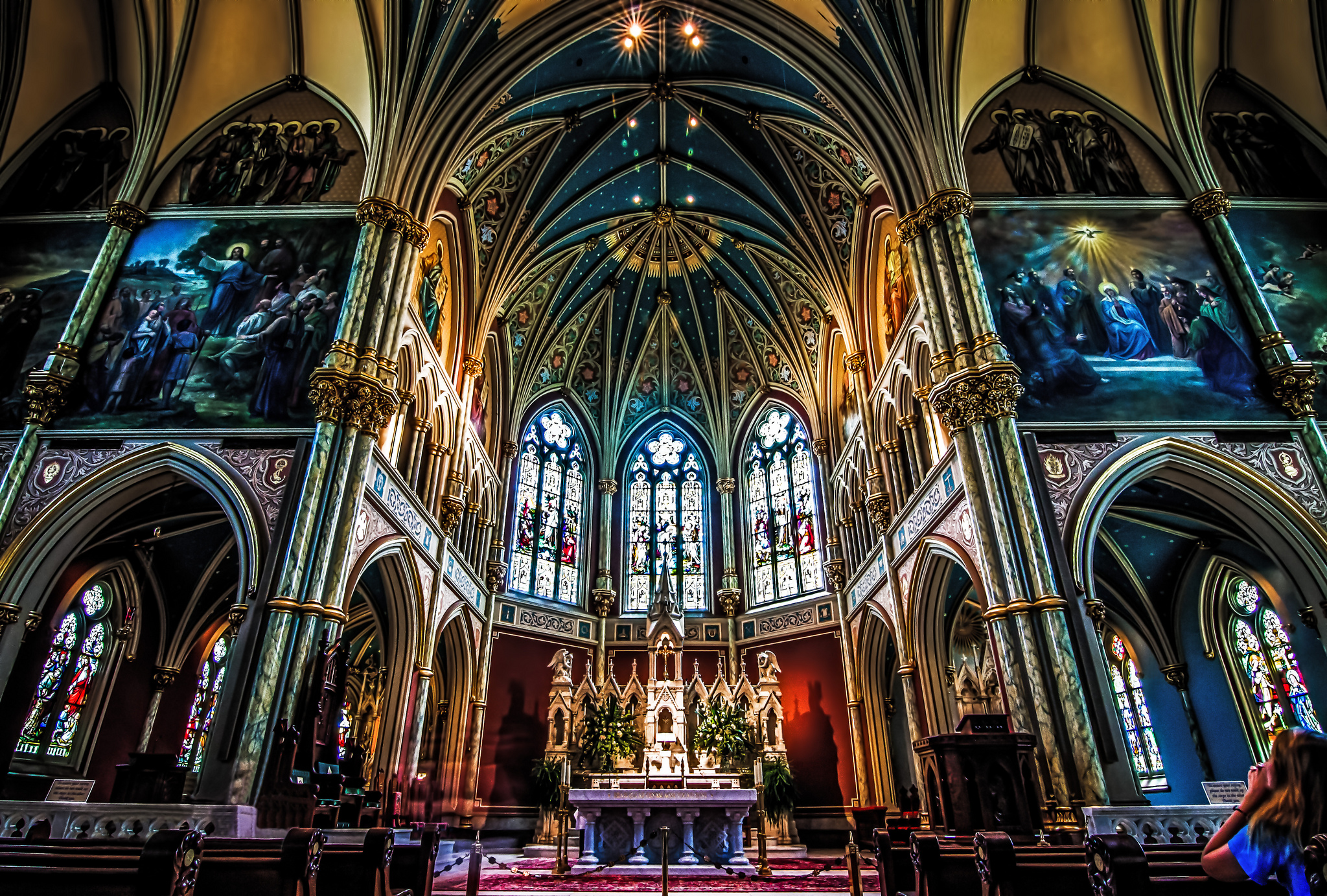
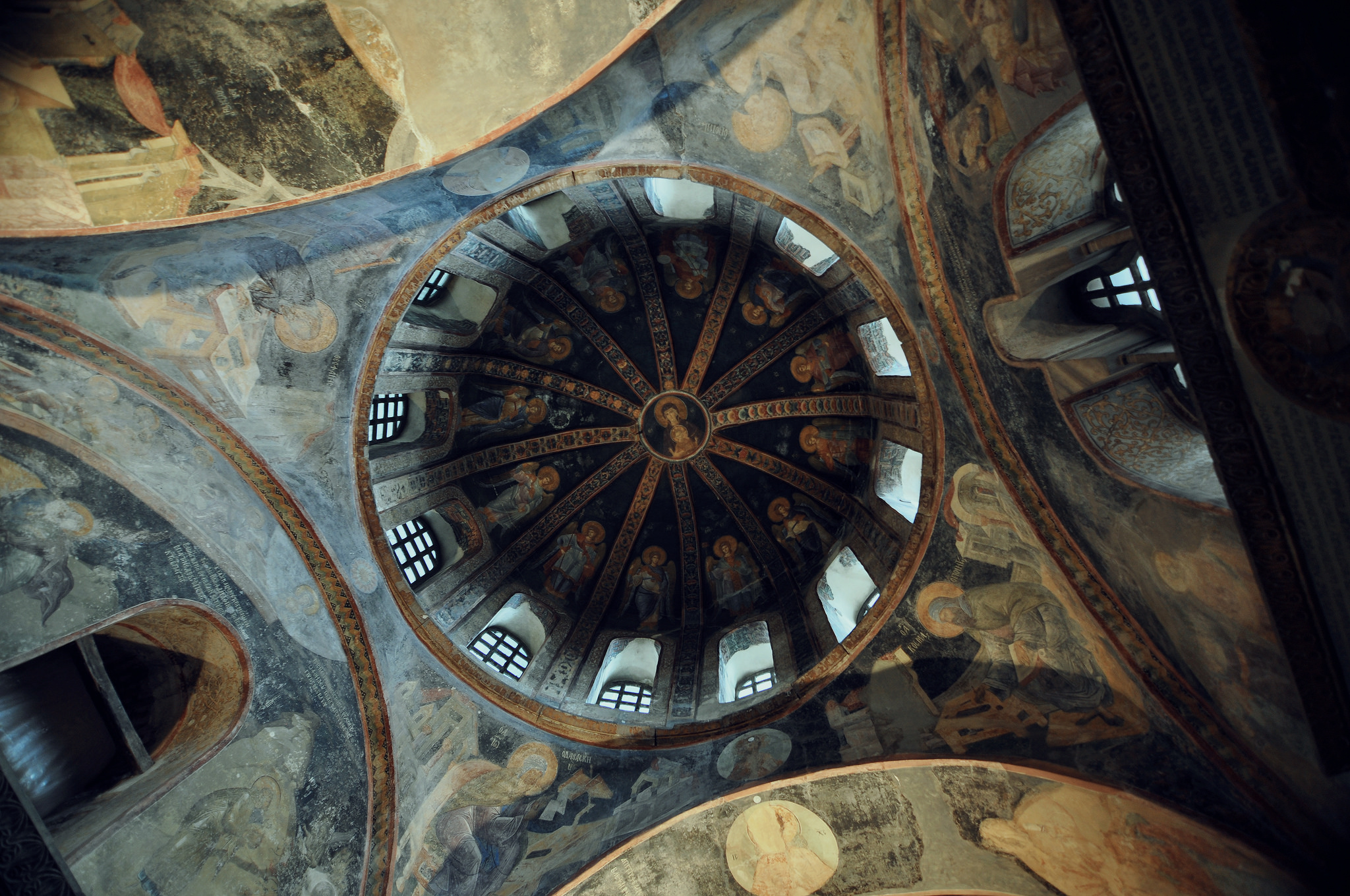
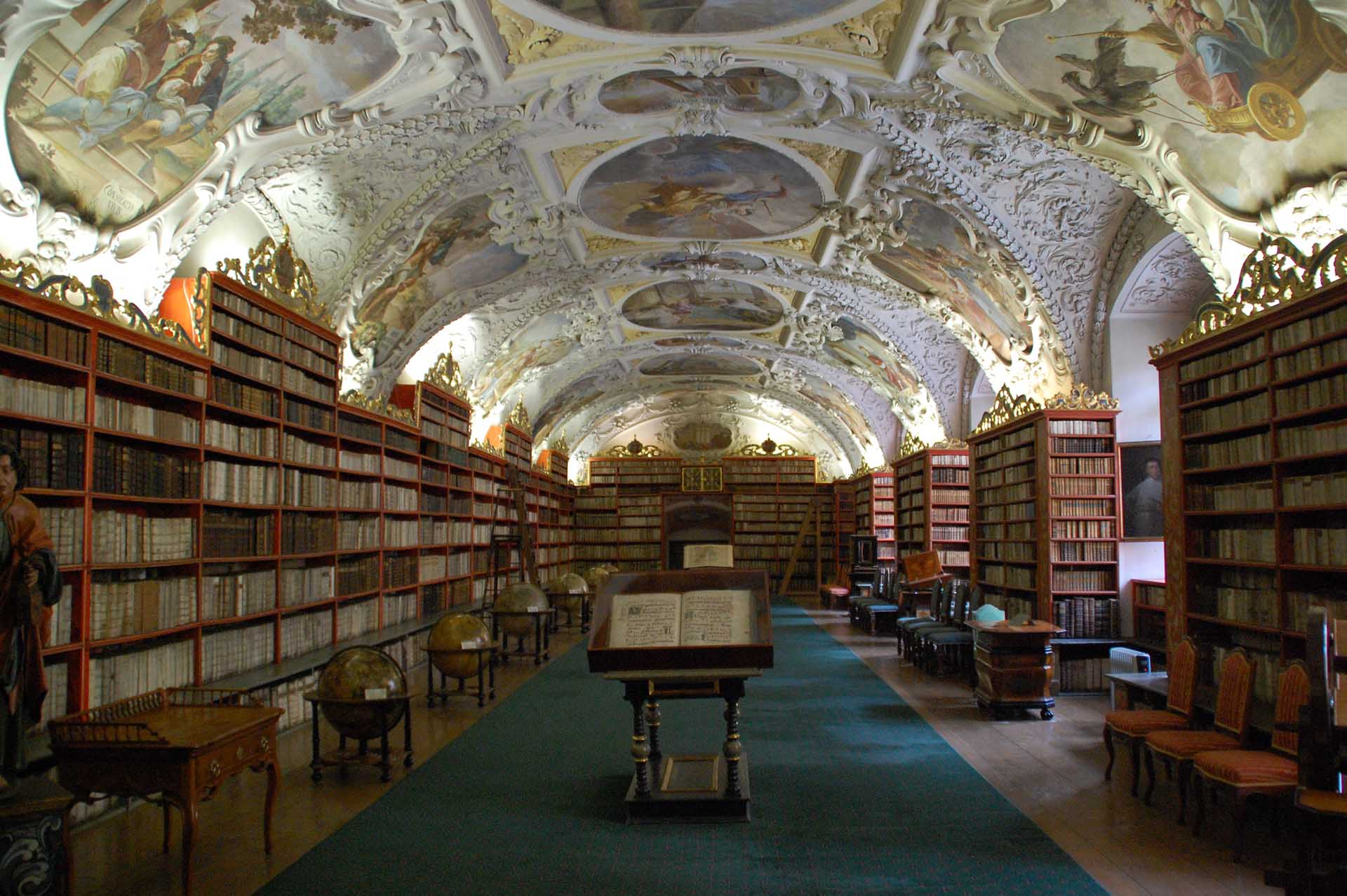
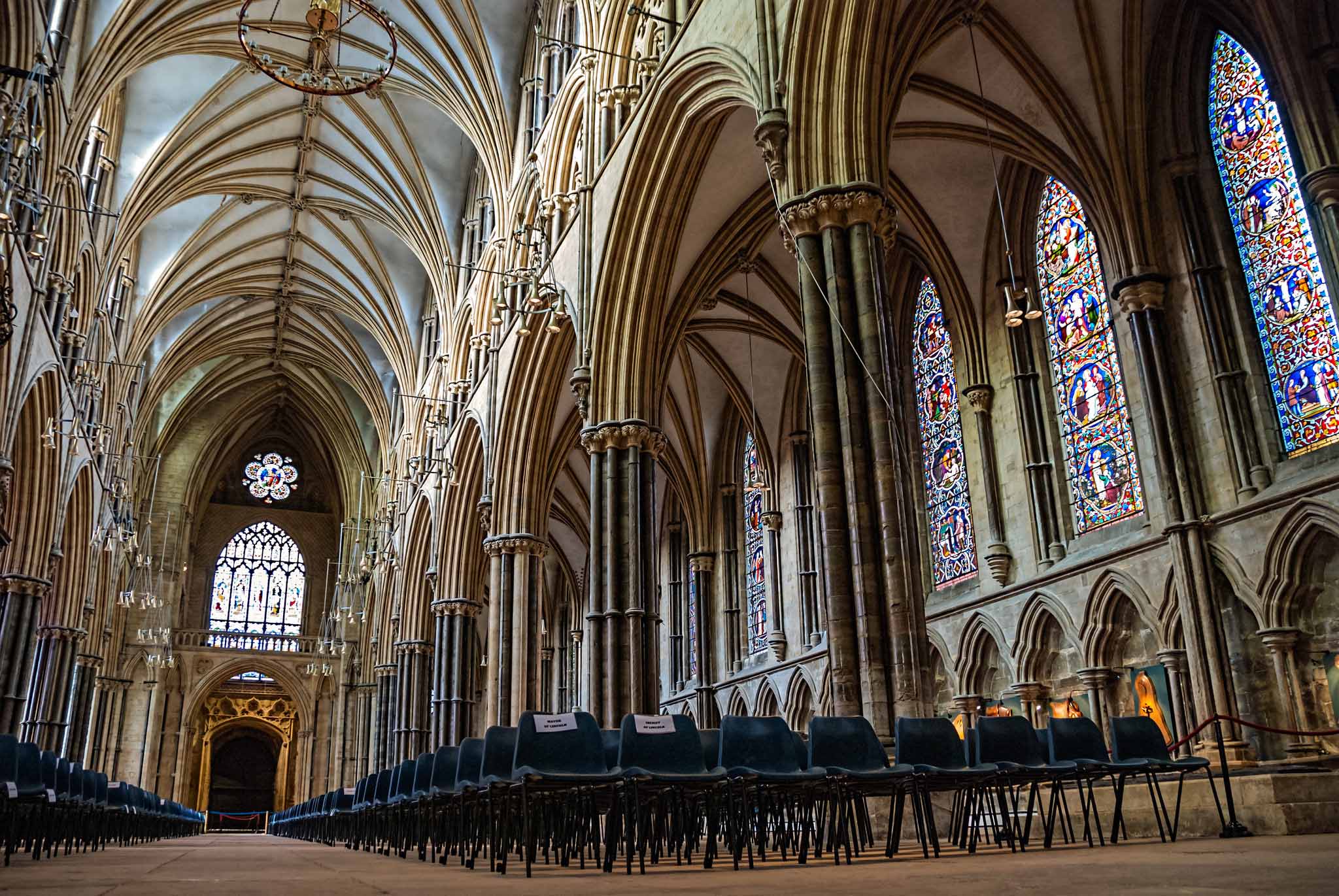
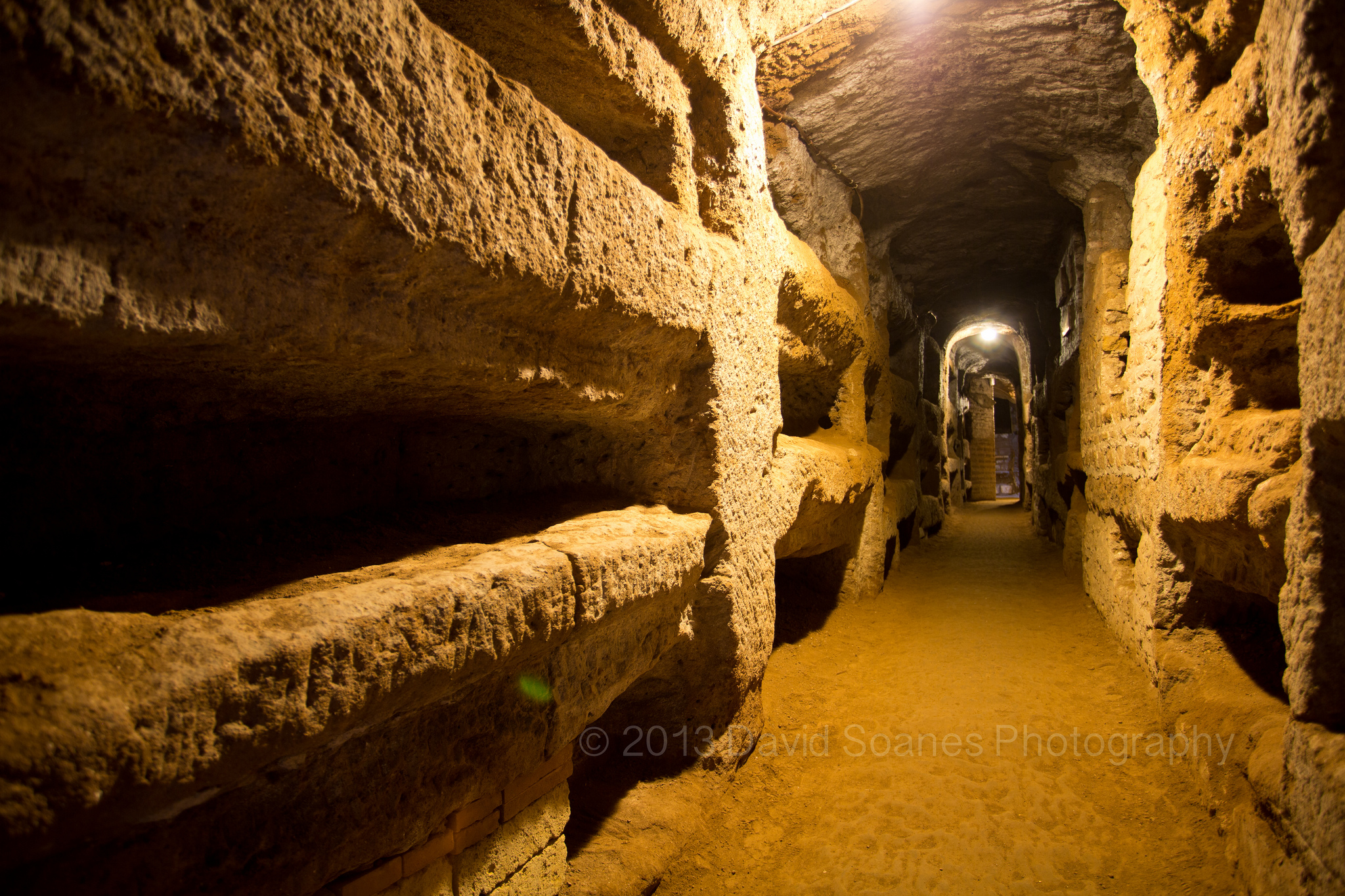
Any ideas on what the extra days found in Daniel 12 mean?
The tt1/2t, 1260 days, & 42 months are found several times in the Apocalypse around the two witnesses, beast, dragon & Ap12woman.
However, Daniel 12 mentions additional periods after the sacrifice & abomination of + 30 days and + 45 days.
In the Apocalypse, there are events after the beast rises to kill the two witnesses including a period of time leading up to the burning of the harlot, and after her burning unto the second coming.
Could this possibly be linked to the extra time periods in Daniel?
There are so few commentaries on Daniel it is hard to tell. And the commentaries on the Apocalypse are not very clear on this: they all say Antichrist will reign only three years and a half, or 42 months. Obviously this cannot be correct. If the prophecies were “sealed up” until the appointed time, and the commentators all basically say they will become apparent only with the event, then the three years or 42 months either a) refers to the height of Antichrist’s reign and achievements or b) is not to be taken literally. (See the article on the Catacombs page: “How Long Will Antichrist’s Reign Last?”).
Can we expect a final manifestation of Antichrist? It is possible, but not likely, in my opinion. This could happen, I believe, if the current imposter in Rome handed the Church off to some one-world religious leader, which I have made allowances for in the article on the Catacombs page “The Final Chapter.” But it would only be a satanic-inspired continuation of the diabolical line of usurpers initiated by Roncalli and Montini; for just as a true pope is always the vicar of Christ, the usurpers would always be the vicars of Satan, so to speak. Montini would still always be the Man of Sin who changed times and laws and took away the Continual Sacrifice. The 45 days, as I noted in another blog, will be granted those remaining after Antichrist’s casting into the lake of fire, as a time of penance. Fr. Hunolt talks about this in his sermons. And as noted elsewhere, Antichrist and his prophet are the first to be resurrected bodily, so will be the first to be cast into eternal hellfire (for those who object that they could not be bodily thrown into that lake if they were identified as Roncalli and Montini).
Here is what commentary I can find says on this.
St. Jerome, Dan. 12: 13 — And it is vain for Porphyry to claim that all these things which were spoken concerning the Antichrist under the type of Antiochus actually refer to Antiochus alone. As we have already mentioned, these false claims have been answered at greater length by Eusebius of Caesarea, Apollinarius of Laodicea, and partially also by that very able writer, the martyr Methodius; and anyone who knows of these things can look them up in their writings.
Rev. Leo Haydock, Dan. 12: 13 — After three years and a half 58 days will occur before the death of Antiochus, when Judas will disperse the troops of his three generals. Some respite will be granted for 45 days during which sinners may repent. It is difficult to say why 45 days are here added to the former number. We are content to depart with Daniel without searching any further into these high mysteries.
St. Bede, Apoc. 12: 14 — He reads the above “years” as follows: “The whole time of the Church is signified, as being comprised in the number of the days above. For a “time” denotes one year, “times” two, “half a time” six months.” I don’t pretend to completely understand what he is saying but obviously he is not in agreement with Haydock.
Perhaps he refers to another biblical verse, “But of this one thing be not ignorant, my beloved, that one day with the Lord is as a thousand years, and a thousand years as one day” (Peter 3:8). In other words, the “times” mentioned are not necessarily to be interpreted literally. Other commentators agree with this.